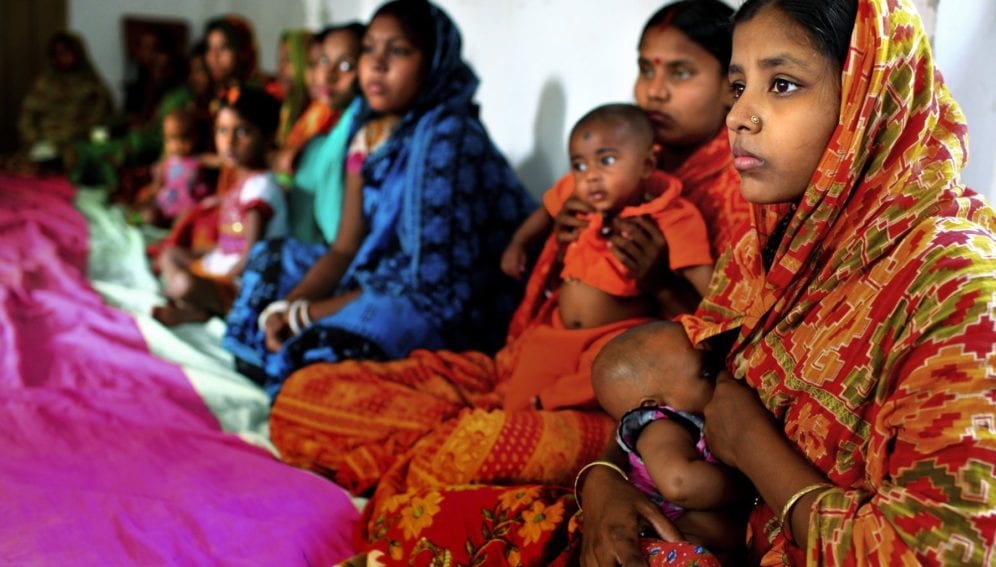By: Naimul Haq
Send to a friend
The details you provide on this page will not be used to send unsolicited email, and will not be sold to a 3rd party. See privacy policy.
[DHAKA] Iron deficiency, a major cause of anaemia, cannot be considered to be a public nutrition problem in Bangladesh thanks to dependence on iron-rich groundwater for drinking purposes by the majority of the population, according to a new research.
Inadequate intake of dietary iron and other micronutrients, poor dietary diversity, infection, haemoglobinopathy (a genetic condition) and household food insecurity are cited as causes of anaemia.
In 2011, the national prevalence of anaemia was estimated to be 51 per cent among under-five children and 42 per cent in non-pregnant women. However, the more systematic National Micronutrient Survey, 2011—12 found the prevalence of anaemia in under-five children to be 33.1 per cent and that in non-pregnant women to be 26 per cent.
“In this nationally representative survey, the relationship of high iron concentration in groundwater and iron sufficiency was also systematically observed in all the populations studied,” Sabuktagin Rahman of the International Centre for Diarrhoeal Disease Research, Bangladesh, tells SciDev.Net.
The new research, the findings of which were published online in Public Health Nutrition, January, assessed the determinants of iron and haemoglobin levels using data from the national survey.
According to the study, although iron deficiency appeared small as a cause of anaemia, the prevalence of anaemia was more than three times that of iron deficiency in children and women, suggesting other underlying factors.
National prevalence of iron deficiency was 10.7 per cent in under-five children compared to 33.1 per cent anaemia for the same group. Similarly, while iron deficiency was 7.1 per cent for non-pregnant women, the average anaemia level in the group was 26 per cent.The study corroborated earlier findings that high levels of iron in groundwater could be correlated to better haemoglobin status in young children. Haemoglobin concentrations provide indications of the severity of iron deficiency.
Rahman, who led the research, said that, in general, poorer sections of the population that depend on groundwater suffered less from iron deficiency and anaemia. According to Rahman, with iron abundantly available in natural groundwater, deficiency of other key nutrients, such as vitamin A, folate and zinc need to be given greater attention.
Since excess iron can cause negative health outcomes, intervention programmes to control anaemia will need to consider the environmental phenomenon of groundwater iron, Rahman said. “This can lead to a new global research agenda in search of evidence-based optimum solutions for anaemia.”
“There is a need for further evidence-based research for policy level adoption of the groundwater iron issue, and of the optimum intervention package for controlling anaemia,” S. M. Mustafizur Rahman, country director, Micronutrient Initiative, Bangladesh, tells SciDev.Net.
Keith West, Jr., micronutrient scientist at the Bloomberg School of Public Health, Johns Hopkins University, says the evidence that the team had gathered on iron deficiency was compelling. “The findings of Rahman and co-authors should prompt an evidence-driven discussion on best approaches to prevent anaemia in the country,” he tells SciDev.Net.














